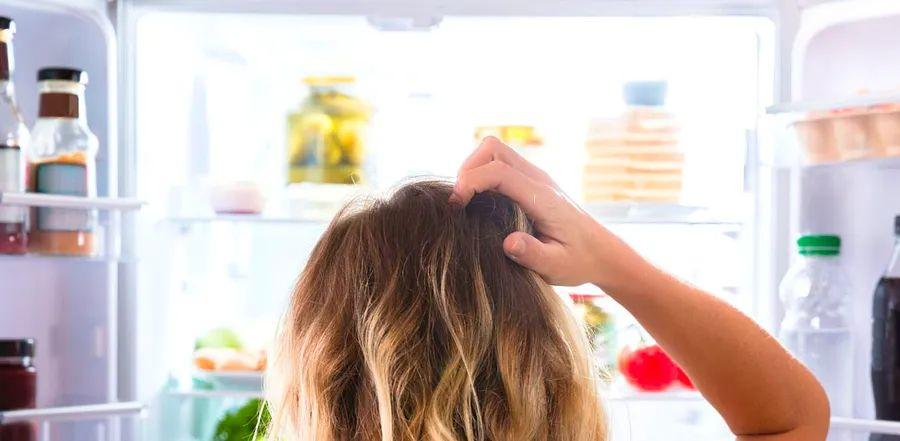What’s the Best Temperature for Your Refrigerator?

The refrigerator/freezer is probably the most used appliance in your kitchen, yet it often goes unnoticed. You load it with food, it keeps things cold or frozen, and you take items out when needed. It's one of those appliances that you only think about when something goes wrong, like a power outage or malfunction.
In reality, your refrigerator does much more than you may realize. A small temperature shift could mean the difference between keeping food fresh or creating a dangerous environment for bacteria. Fortunately, getting it right isn’t too difficult.
So, What’s the Ideal Temperature for a Refrigerator?
As recommended by the FDA, the ideal temperature for your refrigerator is 40ºF or lower. This keeps harmful bacteria such as Salmonella, E. coli, and C. botulinum (which causes botulism) at bay. Given that the FDA regularly issues recalls related to these bacteria, you definitely don’t want them in your fridge.
While 40ºF is the critical number to keep in mind, don’t get too close to it. If your fridge uses a 1-to-5 scale for temperature control, aim for somewhere between 35ºF and 37ºF. Going much higher could push you over the 40ºF mark, while setting it too low might freeze liquids inside.
Does the Temperature of My Freezer Matter?
You might think a freezer running at or below 32ºF, the freezing point of water, is fine. However, that’s not entirely true. Just like with the fridge’s 40ºF guideline, the FDA recommends keeping your freezer at or below 0ºF for optimal storage.
Setting your freezer to 0ºF instead of 0ºC serves a few important purposes. For one, not all foods freeze exactly at 32ºF. Also, maintaining a constant 0ºF ensures your frozen items stay safe to eat for an extended period.
How Can I Measure the Temperature Inside My Fridge?
Not all refrigerators are created equal—features and performance can differ significantly from model to model. While some high-end fridges offer a built-in temperature display, yours might not have that luxury. To complicate things further, Consumer Reports testing suggests that even when a fridge does have a readout, it might not always be accurate.
"Some fridges are dead-on accurate, but others can be way off," said Joe Pacella, Consumer Reports' test engineer for refrigerators. "I’ve seen refrigerators that were off by as much as 5º, which could be the difference between keeping food fresh or letting it spoil."
Your fridge might already show an accurate temperature, but it's still a good idea to double-check with a thermometer. You can buy either an analog or digital thermometer to keep tabs on your fridge or freezer's temperature. Some analog models even feature color-coded dials to indicate when the temperature is too high or too low. If you're looking for peace of mind that your food is stored at the right temperature, investing in one of these thermometers is a smart move.
What Else Can I Do to Adjust My Fridge's Temperature?
There are several reasons your fridge's temperature might seem off, many of which can be easily fixed with a bit of DIY effort.
A key factor in maintaining your fridge's temperature is the condition of the door seals. If the door gaskets, which form a tight, magnetic seal, aren’t functioning properly, cool air can leak out. To check the seal, place a dollar bill between the door and the fridge, leaving part of it sticking out. If it takes a little effort to pull it out, your seals are working fine. But if it slips out easily, the seal may need attention.
The condenser coils, responsible for creating the cool air inside your fridge, can sometimes become clogged with dust and debris, which hampers their performance. Fortunately, cleaning them is simple with the right tools—a coil brush and a vacuum. They're typically located at the lower back of the fridge, and a quick annual cleaning can keep them functioning efficiently.
Fridge organization also plays a role in maintaining the right temperature. Avoid overcrowding your fridge, as this can restrict airflow. Be mindful of the air vents, often found on the back or side walls—ensure they’re not blocked by food items placed too close to them.
Make Your Fridge Work for You
While keeping your fridge and freezer at the correct temperature may seem like a lot to manage, it’s not as complicated as it seems. Knowing the ideal temperature range is half the battle. Once you've set it correctly, maintaining it is straightforward and doesn’t require much effort.

1

2

3

4

5
Evaluation :
5/5